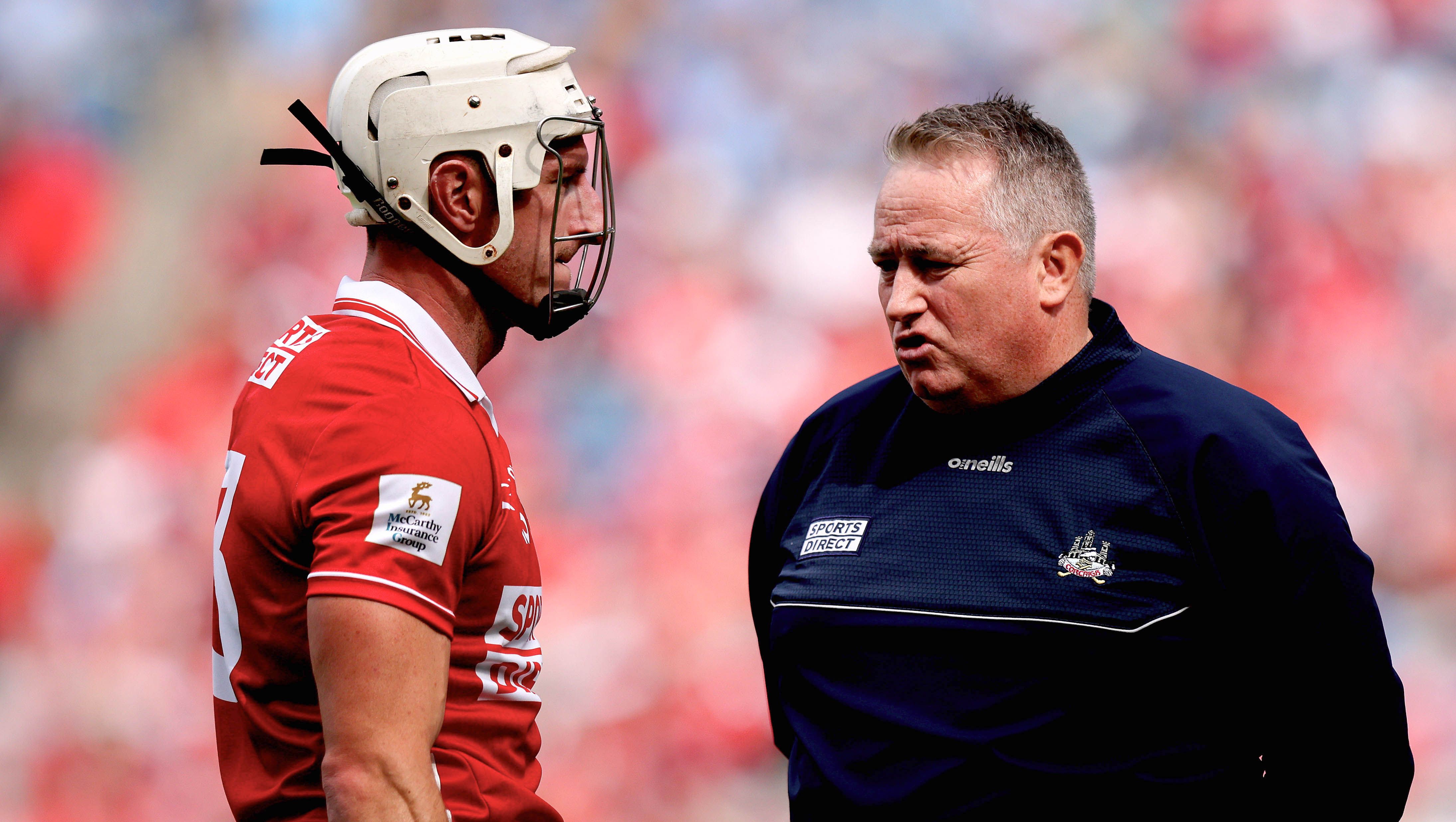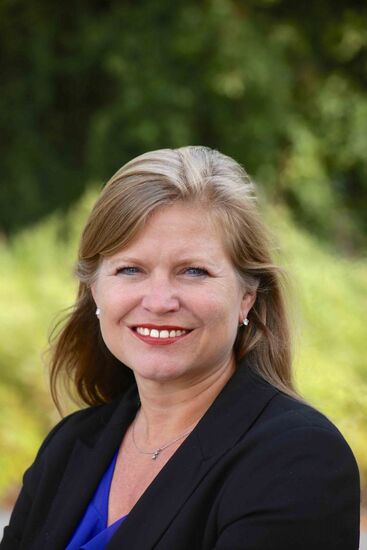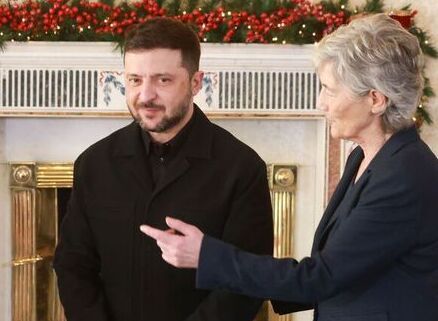Teresa Crowe, another legendary GAA character, was laid to rest in Thurles at the weekend. She was 90. Teresa was born In Killarney and spent the early years there, before moving to Thurles. She became a staunch Tipp woman and a great promoter and supporter of all things Tipperary. Teresa emigrated from Ireland in the early 1960s, and would spend the next three decades, living at various times in Manhattan, the Bronx and New Jersey. Four years ago she returned to Thurles, after her partner Phonsie Farrell passed away. At the time of her death, Teresa was a resident of the Ardeen Nursing Home in Thurles. Her casket was draped in the Tipperary colors
Once in the Big Apple, Teresa set about exploring career opportunities, and she decided on the nursing profession. She worked and studied at St. Francis Hospital and became a registered nurse, and thus began a very successful and rewarding career in the medical field. Like for many young emigrants of that era, Gaelic Park was the desired destination on Sunday. There were plenty of games along with dining and dancing and you could squeeze in Mass by hopping across the road to the church just a stone’s throw from the park.
Well it was on one of those Sundays that Teresa began her long involvement with Gaelic Park, and more particularly with the welfare of the players. During the course of a game a player appeared to have been seriously injured, and Teresa feared that he might not be properly handled by the willing but non-medical helpers, she made her way to the injured player and took charge until advanced care arrived. John Kerry O’Donnell, the proprietor of Gaelic Park, was so impressed with Teresa’s actions that he implored her to be the nurse on the sideline for future games. Well that role she adopted, and for the next half century, Teresa was a perennial presence voluntarily on the sideline every Sunday in her nursing outfit. During that time she braced, bandaged, splinted and massaged hundreds of injured players. On one occasion medical equipment was rather sparse, so Teresa in a bout of ingenuity, used a broken hurley and bits of towels to stabilize a fractured limb. Teresa was like a second mother to the legions of hurlers and footballers who graced Gaelic Park. She invariably followed up on them with calls so that they got the proper treatment after leaving the field. She stayed on as a volunteer at Gaelic Park long after she’d retired from her full-time job. In addition, Teresa was always on hand to deliver the anthems as the occasions demanded. Through the years, Teresa was also a stalwart in both the Tipperary Hurling Association and the County Tipperary N. & B. Association of NY.
For many years Teresa Crowe was rightfully known as the First Lady of the New York GAA, though the Big Apple organization would be perceived as a male-dominated domain. Of course in recent times, it no longer has that dubious distinction, after Joan Henchy occupied the premier spot. Teresa had no bother holding her to account and could trade barbs with the best of them. My former colleague from the press-box, Paddy Sheanon, opines that there’ll be good craic on the heavenly sideline when Teresa meets up great characters such as Seamus Dooley, John Riordan, Oliver O’Donnell, Jackie Salmon and Mike Cassidy among others. St. Peter could have his hands full with this crew of memorable characters as debates and disputes will be rehashed.. In many ways Teresa was the embodiment of volunteerism, which is the bedrock of the GAA. Ni bheid a leithead aris ann.
John Phelan
John Phelan was the third of a family of seven born in Graignagour in the parish of Four Mile Water, Waterford. He was educated in the Christian Brothers Schools where he excelled academically and in sports. His athletic prowess was very much to the fore when he helped Four Mile Water capture the Waterford Junior football championship in 1956. However, the following year John landed in the Big Apple, and thus began a lengthy career in New York’s GAA. In the vernacular of the GAA, John would be considered a “lifer,” given the length and extent of his involvement, especially with the Senior Board, the Minor Board and of course the Rangers.
Once John settled in the Big Apple, he set about reviving the defunct Waterford hurling and football club. Success soon followed with a junior title in 1958. For the next decade and a half, John was a regular in the Waterford line-out and his playing career ended with another title in 1970. Once his playing days ended, John stayed actively involved by refereeing for many years. Besides playing and officiating, he proved to be quite adept at the administrative level. At various times John served as a register, auditor and two years as vice-chairman, but he lost out in the race for the chair to Oliver O’Donnell in1987. John’s forte would be financial management, and he completed his reign of service by being treasurer of the GAA for 10 years.
Besides being deeply involved in the administrative affairs of the New York Senior Board, John could simultaneously be considered the backbone of the Rangers Club in the same period. Records show that for 45 years, he was involved in coaching, training and managing hundreds of youngsters in the various under-age teams under the auspices of the New York Minor Board. Besides promoting Gaelic sports with the Minor Board, John was also instrumental in promoting CYO basketball in St. Peters Parish in the 1970s and ‘80s. Perhaps a good indication of the gratitude for John’s unselfish efforts at teaching and coaching the fundamentals of sports were the throngs of people of all ages that showed up to pay their respects at Fynn’s Funeral Home on Central Avenue. Further large crowds attended the requiem mass on Saturday in St. Peters Church. Through the years John has held numerous positions with the County Waterford Association. John has lived for the last 57 years in Yonkers, and he is survived by his wife Sheila, nee Flynn, a native of Ballyduff. His family also includes Patricia, Greg, John, Vince and Thomas. Sadly another great life-time warrior of the New York GAA has passed on to the heavenly playing fields and board rooms.
RYAN’S DEPARTING CORK
DECISIVE FOR HORGAN
By P.J. Cunningham
Patrick Horgan says he could have been persuaded to give it another year with Cork if manager Pat Ryan had decided to stay on for another 12 months. The All-Ireland senior hurling all-time leading scorer brought the curtain down on his 18-year senior inter-county career a few weeks back, a month after Ryan opted against seeking another term as manager in the wake of the Rebels’ All-Ireland final defeat to Tipperary. Horgan said: “Pat leaving and all that, it was really hard. Pat was well got. I loved him, loved playing for him; it was disappointing. I probably would have done anything in the world that Pat Ryan asked me to do.’’
Burns salutes FRC at Special Congress
Whether it was a green letter or red letter day was a moot point but on Saturday when the GAA’s special congress endorsed all 62 motions before it from the Football Review Committee, it stated that their mission had been accomplished with flying colors.
The enhancement of the game in the past year, and the likelihood of further improvements under the new rules, means that this committee under the baton of Jim Gavin will long be revered for what they have achieved in such a short time.
The first person to throw bouquets in that direction was Jarlath Burns, current GAA President who thanked the group for “their incredible work” throughout this year.
He told the Special Congress: “We knew that this game of Gaelic football needed serious surgery if it was going to be the game that we knew it could become and now it has.
“We've watched a full year of the game being played at all levels and we really like what we see and it's important we recognise the people who did the work on this and that's the Football Review Committee.
“I want to thank the FRC members for the incredible work that they put in. They achieved every one of the goals that they set out to.
“They began with this vision that they wanted to make Gaelic football the best field sport to play and watch and participate in. I think, based on what we have seen this year, they have done that and the club championships that we have seen so far have really cemented that.
“So, we pay tribute to all of them. The brevity of today's proceedings was a real vote of confidence in the work that they have done and we have all learned a lot as to how to achieve change in the GAA through the work that the FRC have done.”
To recap, delegates at the Special Congress passed all of the FRC’s proposals - which comes into effect next January - into the rule book.
The opening motion, dealing with playing gear, amended the rule where gear must be made by an Irish manufacturer to one that is officially licensed by the GAA.
Among the changes are the following - If a player moves from the sideline or 45m line before the referee has thrown in the ball to start or restart the game a free-kick will be awarded to the opposition from the middle of the half-way line.
If opposition players foul simultaneously, the referee will start/restart the game again as normal.
In terms of two-point scores, all such scores from outside the arc will count provided no other player from the same team as the shooter touches it after the shot is taken.
In this year’s game, there were situations where a player from the opposition touched two-pointer efforts before they went over the bar and this saw such attempts count as only one point.
In terms of sportsmanship, the GAA agreed with the proposal to come down heavily on efforts of foul play. A player will receive a black card and a penalty awarded against him for deliberately denying a goal-scoring opportunity by pulling an opponent's jersey. This rule will apply at all inter-county grades and also at club level.
Another rule which will have a massive impact, particularly at local level, will concentrate on what is deemed to be disruptive conduct by team officials. Like players, they too can be penalised by giving the opposition a free on the 13-metre line and a linesman can alert the referee if this rule has been broken by team officials.
Should the infraction occur immediately before the start of the game or during the half-time interval as is often the case in club fixtures, the game shall start or restart with such a 13-metre free.
With the focus on fair play, a player who tries to advance the ball from the right place where a free or sideline kick should be taken, or if he tries to take a sideline from a position not outside the boundary line, the opposition will be awarded a free. Up to now, a throw-in was awarded.
Flynn retires from Lily Whites
Daniel Flynn was one of the best forwards produced by Kildare in the past decade and it was perhaps his misfortune that his arrival on the inter-county scene coincided with Dublin’s total dominance in Leinster and record breaking exploits in terms of Sam Maguire wins since he made his debut as an 18 year old in 2012.
Despite this, so good was the Johnstownbridge attacker that he managed to receive three All-Star nominations in 2017, 2018 and 2021.
Kildare GAA said in a statement last week: “On behalf of Kildare GAA, we wish to sincerely thank Daniel Flynn for his outstanding service to Kildare GAA following his decision to step down from Inter County Football.”
Daniel experienced a brief stint in Aussie Rules with AFL outfit Port Adelaide in 2014 before returning to Kildare the following season.
Flynn, 31, didn’t leave the intercounty stage empty-handed as he was part of the successful Tailteann Cup triumph this summer, scoring a point in the final against Limerick.








